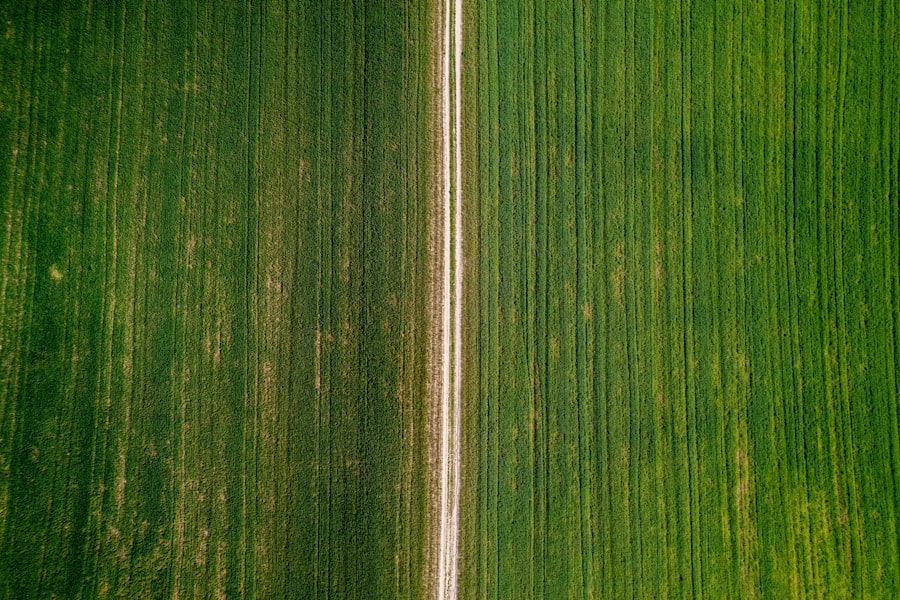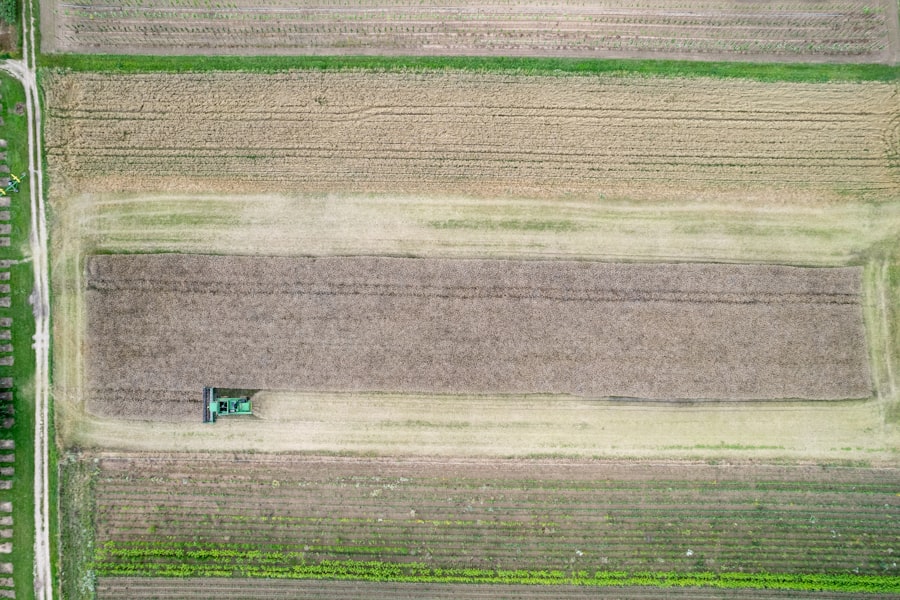Precision agriculture represents a transformative approach to farming that leverages technology to enhance crop yields, optimize resource use, and minimize environmental impact. This methodology is rooted in the idea of tailoring farming practices to the specific needs of individual plants or sections of a field, rather than applying a one-size-fits-all strategy. By utilizing data-driven insights, farmers can make informed decisions that lead to more efficient operations and sustainable practices.
The advent of advanced technologies such as GPS, remote sensing, and data analytics has paved the way for this innovative agricultural paradigm. The concept of precision agriculture is not entirely new; it has evolved over several decades. Initially, farmers relied on basic tools and observational techniques to manage their crops.
However, with the rapid advancement of technology, the agricultural landscape has undergone significant changes. Today, precision agriculture encompasses a wide range of practices, including variable rate application of fertilizers and pesticides, soil moisture monitoring, and crop health assessment through aerial imagery. This evolution has been driven by the need for increased food production in the face of a growing global population and the challenges posed by climate change.
Key Takeaways
- Precision agriculture utilizes technology to optimize farming practices and increase efficiency.
- AI plays a crucial role in precision agriculture by analyzing data and making real-time decisions.
- Sensors in precision agriculture provide valuable data on soil conditions, weather patterns, and crop health.
- The combination of AI and sensors in agriculture leads to improved crop yields, reduced resource usage, and cost savings.
- Challenges in implementing AI and sensors in agriculture include high initial costs, data privacy concerns, and the need for specialized skills.
The Role of AI in Precision Agriculture
Artificial intelligence (AI) plays a pivotal role in the advancement of precision agriculture by enabling farmers to analyze vast amounts of data quickly and accurately. Machine learning algorithms can process information from various sources, such as satellite imagery, weather forecasts, and soil sensors, to provide actionable insights. For instance, AI can predict crop yields based on historical data and current conditions, allowing farmers to make informed decisions about planting schedules and resource allocation.
This predictive capability is crucial for optimizing production and ensuring food security. Moreover, AI enhances decision-making processes by identifying patterns and trends that may not be immediately apparent to human observers. For example, AI systems can analyze data from multiple sensors deployed across a farm to detect early signs of pest infestations or diseases.
By recognizing these issues before they escalate, farmers can implement targeted interventions that minimize crop loss and reduce the need for chemical treatments. This proactive approach not only improves crop health but also contributes to more sustainable farming practices.
The Impact of Sensors in Precision Agriculture

Sensors are integral to the success of precision agriculture, providing real-time data that informs farming decisions. Various types of sensors are employed in modern agriculture, including soil moisture sensors, temperature sensors, and nutrient sensors. These devices collect critical information about the growing environment, enabling farmers to monitor conditions closely and respond promptly to changes.
For instance, soil moisture sensors can help determine when irrigation is necessary, preventing overwatering and conserving water resources. The deployment of drones equipped with multispectral cameras has further revolutionized the use of sensors in agriculture. These drones can capture high-resolution images of fields, allowing farmers to assess crop health from above.
By analyzing the spectral data collected by these cameras, farmers can identify areas of stress within their crops that may require attention. This aerial perspective provides a comprehensive view of the field, enabling more precise interventions that enhance overall productivity.
Advantages of AI and Sensors in Agriculture
The integration of AI and sensors into agricultural practices offers numerous advantages that extend beyond mere efficiency gains. One significant benefit is the reduction in resource waste. By utilizing data-driven insights to guide decisions on water usage, fertilizer application, and pest control, farmers can minimize inputs while maximizing outputs.
This not only leads to cost savings but also reduces the environmental footprint of agricultural operations. Additionally, AI and sensor technologies contribute to improved crop quality and yield consistency. With precise monitoring and timely interventions, farmers can cultivate healthier plants that are more resilient to environmental stressors.
For example, by using AI algorithms to analyze weather patterns and soil conditions, farmers can optimize planting schedules to align with ideal growing conditions.
Challenges and Limitations of AI and Sensors in Agriculture
Despite the many advantages offered by AI and sensor technologies in precision agriculture, several challenges and limitations persist. One primary concern is the high initial investment required for implementing these technologies. Many small-scale farmers may struggle to afford the necessary equipment and software solutions, creating a disparity in access to advanced agricultural practices.
This financial barrier can hinder the widespread adoption of precision agriculture techniques. Moreover, the reliance on technology raises questions about data privacy and security. As farms become increasingly connected through IoT devices and cloud-based platforms, the risk of cyberattacks or data breaches grows.
Farmers must navigate these concerns while ensuring that their sensitive information remains protected. Additionally, there is a need for ongoing training and education for farmers to effectively utilize these technologies. Without proper understanding and skills, the potential benefits of AI and sensors may not be fully realized.
Case Studies of Successful Implementation

Several case studies illustrate the successful implementation of AI and sensor technologies in precision agriculture across various regions and crops. One notable example is the use of AI-driven analytics by a large-scale corn producer in the Midwest United States. By integrating satellite imagery with machine learning algorithms, the farmer was able to identify underperforming areas within their fields.
Targeted interventions were then applied based on this analysis, resulting in a 15% increase in overall yield while significantly reducing fertilizer costs. Another compelling case involves a vineyard in California that adopted drone technology for crop monitoring. By utilizing drones equipped with multispectral cameras, the vineyard manager was able to assess vine health more accurately than traditional methods allowed.
The data collected enabled precise irrigation scheduling and targeted pest management strategies. As a result, the vineyard not only improved grape quality but also reduced water usage by 20%, showcasing how technology can enhance sustainability in agriculture.
The Future of Precision Agriculture with AI and Sensors
Looking ahead, the future of precision agriculture appears promising as advancements in AI and sensor technologies continue to evolve. The integration of 5G connectivity is expected to enhance real-time data transmission from sensors deployed across vast agricultural landscapes. This increased connectivity will enable farmers to make quicker decisions based on up-to-the-minute information about their crops and environmental conditions.
Furthermore, as AI algorithms become more sophisticated, they will be able to provide even deeper insights into complex agricultural systems. For instance, predictive analytics could evolve to incorporate climate change models, allowing farmers to anticipate shifts in growing conditions over time. This proactive approach will be essential for adapting agricultural practices to an increasingly unpredictable climate.
The Potential of AI and Sensors in Revolutionizing Agriculture
The potential for AI and sensor technologies to revolutionize agriculture is immense. As these tools become more accessible and affordable for farmers worldwide, they hold the promise of transforming traditional farming practices into highly efficient, data-driven operations. By harnessing the power of technology, farmers can not only increase productivity but also contribute to sustainable food production systems that are resilient in the face of global challenges.
In summary, precision agriculture represents a significant shift in how we approach farming in an era marked by technological advancement and environmental concerns. The synergy between AI and sensor technologies offers a pathway toward more sustainable agricultural practices that prioritize efficiency while safeguarding natural resources for future generations. As we continue to explore these innovations, it is clear that they will play a crucial role in shaping the future of food production on a global scale.
In the rapidly evolving field of precision agriculture, the integration of AI and sensors is transforming traditional farming practices by enhancing efficiency and productivity. A related article that explores the impact of technology in a different sector is How Smartwatches Are Revolutionizing the Workplace. This article delves into how wearable technology is reshaping work environments by improving communication, monitoring health, and increasing overall productivity. Both articles highlight the transformative power of technology in optimizing operations and driving innovation across various industries.
FAQs
What is precision agriculture?
Precision agriculture is a farming management concept that uses technology to optimize crop yields and reduce waste. It involves the use of sensors, AI, and other advanced technologies to monitor and control various aspects of the farming process, such as irrigation, fertilization, and pest control.
How are AI and sensors being used in precision agriculture?
AI and sensors are being used in precision agriculture to collect and analyze data from the farm environment. Sensors can monitor soil moisture, temperature, and nutrient levels, while AI algorithms can process this data to provide insights and recommendations for optimizing crop production.
What are the benefits of using AI and sensors in precision agriculture?
The use of AI and sensors in precision agriculture can lead to several benefits, including improved crop yields, reduced resource usage (such as water and fertilizer), lower production costs, and more sustainable farming practices. Additionally, these technologies can help farmers make data-driven decisions and respond more effectively to environmental and market changes.
What are some examples of AI and sensor technologies used in precision agriculture?
Examples of AI and sensor technologies used in precision agriculture include drones for aerial monitoring, soil sensors for measuring moisture and nutrient levels, weather stations for tracking environmental conditions, and AI-powered software for analyzing data and providing recommendations to farmers.
What are the challenges of implementing AI and sensors in precision agriculture?
Challenges of implementing AI and sensors in precision agriculture include the initial cost of acquiring and installing the technology, the need for reliable connectivity in rural areas, and the requirement for farmers to learn how to interpret and act on the data provided by these technologies. Additionally, there may be concerns about data privacy and security.

